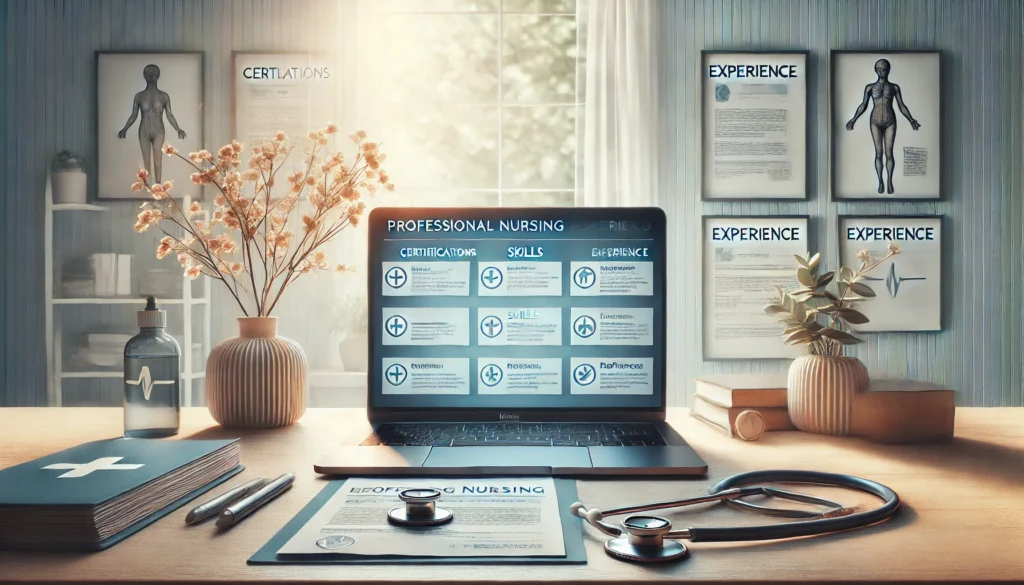A professional nursing portfolio is an essential tool for every nurse seeking to advance their career. It not only showcases your skills and achievements but also helps you stay organized in an ever-evolving profession. In this guide, we’ll explore everything you need to know about creating a professional portfilo example nursing that stands out.
What is a Nursing Portfolio?
A nursing portfolio is a collection of documents and records that demonstrate your professional growth, skills, and accomplishments. It serves as a comprehensive representation of your career, showcasing your qualifications, certifications, and the impact you’ve made in the field of nursing.
Why Every Nurse Needs a Portfolio
A nursing portfolio is more than a file of documents; it’s a testament to your dedication and expertise. Here’s why every nurse should maintain one:
- Career Advancement: Employers value well-organized portfolios during interviews and promotions.
- Showcase Your Skills: Highlight specialized competencies and experiences.
- Track Your Growth: Keep a record of your achievements and certifications over time.
Key Components of a Professional Nursing Portfolio
Personal Information
Include your name, credentials, contact details, and a professional photo.
Nursing Philosophy Statement
Write a brief statement about your core values and approach to patient care.
Resume or CV
Provide an updated and comprehensive document listing your education, experience, and skills.
Licensure and Certifications
Include copies of your nursing license and certifications such as BLS, ACLS, and PALS.
Clinical Skills and Competencies
Highlight specific skills like IV insertion, wound care, and telemetry monitoring.
Professional Development
Document conferences, workshops, and continuing education activities.
Work Samples
Share de-identified care plans, case studies, or project contributions.
Letters of Recommendation
Include testimonials from mentors, supervisors, or colleagues.
How to Organize Your Nursing Portfolio
A well-organized portfolio makes a strong impression. Here’s how to structure it:
- Digital vs. Physical: Decide whether to create a printed or digital portfolio. Digital options like PDFs or online platforms offer flexibility.
- Use Sections: Divide your portfolio into clear sections using tabs or headings for easy navigation.
- Table of Contents: Include a detailed list of sections to guide viewers.
Step-by-Step Guide to Building Your Nursing Portfolio
Collect Your Documents
Gather your licenses, certifications, transcripts, and recommendation letters.
Highlight Clinical Experience
Showcase your expertise through detailed descriptions of past roles and responsibilities.
Add Professional Development
Include evidence of continuing education and participation in workshops.
Include Work Samples
Provide real-world examples of your contributions to patient care or projects.
Tips to Make Your Portfolio Stand Out
- Customize for Specific Roles: Tailor your portfolio to match the requirements of the position you’re applying for.
- Showcase Leadership: Highlight any leadership roles or quality improvement initiatives you’ve led.
- Focus on Design: Ensure your portfolio is visually appealing with a clean and professional layout.
Common Mistakes to Avoid
- Overloading Information: Avoid including unnecessary details; focus on relevance.
- Neglecting Updates: Regularly review and update your portfolio with recent accomplishments.
- Ignoring Digital Trends: Leverage online platforms like LinkedIn to create a digital portfolio.
Benefits of a Well-Maintained Nursing Portfolio
A comprehensive portfolio offers numerous advantages:
- Career Growth: Impress potential employers with a detailed record of your skills and achievements.
- Professional Confidence: Reflect on your growth and contributions to the nursing profession.
- Networking Opportunities: Share your portfolio during interviews, conferences, or with colleagues.
Example of a Professional Nursing Portfolio
A sample portfolio might include the following:
- Personal details and nursing philosophy.
- An updated resume.
- Licenses, certifications, and clinical skills list.
- Evidence of professional development and work samples.
- Letters of recommendation.
Conclusion
Creating and maintaining a professional nursing portfolio is a critical step in advancing your career. It not only helps you organize your achievements but also positions you as a competent and dedicated professional. Start building your portfolio today to unlock new opportunities in your nursing journey.
Frequently Asked Questions (FAQs)
What is a professional portfilo example nursing?
It refers to a structured collection of documents highlighting your nursing skills, certifications, and accomplishments.
What should I include in my portfolio?
Essential documents like licenses, certifications, work samples, and a resume.
How often should I update my portfolio?
Regularly update it after achieving new certifications, skills, or professional milestones.
Can I use a digital format for my nursing portfolio?
Yes, digital portfolios are increasingly popular and offer easy sharing and customization options.
Why is a nursing portfolio important?
It helps in career advancement, showcasing skills, and staying organized professionally.
Recommended Article:
Dawn at Ingalls Pediatrics Dentistry: Nurturing Healthy Smiles
Kripokin: The Ultimate Supplement for Health and Performance


